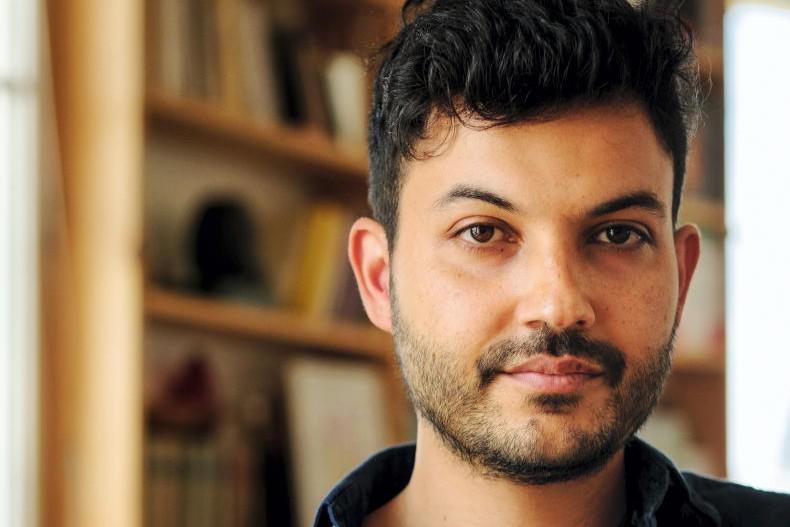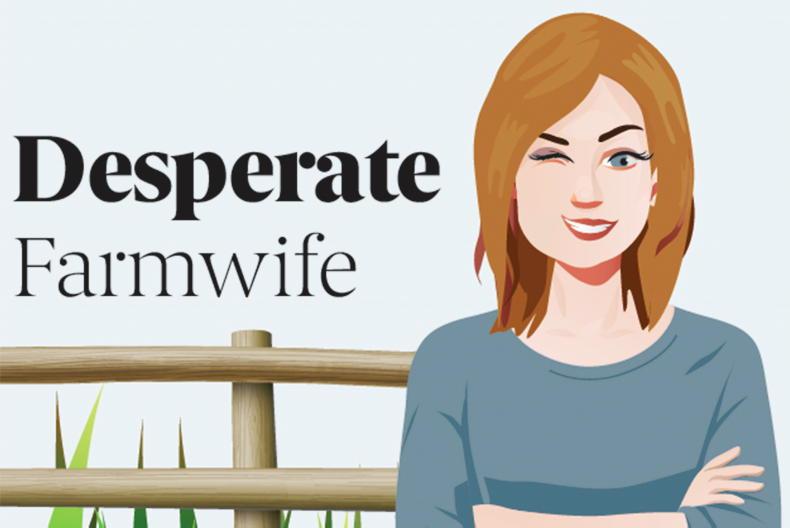Snuffly Hedgehog looked at Little Squirrel with surprise. He had always thought that squirrels were carefree, with all their jumping around from tree to tree. “I guess you can never know what someone else is feeling,” he thought. Snuffly Hedgehog saw the worry in Little Squirrel’s face. It was something he could understand.
“Little Squirrel, I get scared and worried all the time. It is something that lots of animals experience. Sometimes we feel it in our bodies, and it can feel different for everyone.”

The Little Squirrel Who Worried by Katie O'Donoghue.
I wish, when I was young and experiencing my first panic attack that I had a book which explained everything from a perspective I could understand.
For some unlucky kids, anxiety is something inherited and it isn’t always clear as to why someone might be feeling the way they do.
Fortunately, today we have a better understanding and acceptance of anxiety in children. Of my three, one in particular is prone to bouts of anxiety.
Over the Christmas holidays, we snuggled into bed and read the story The Little Squirrel Who Worried, by Killarney native Katie O’Donoghue. Katie is a child and young people’s therapist but has always been an artist. Through her first book, which she has both written and illustrated, she has found a way to combine her talents.
The right perspective
“I’ve loved art since I was a small child and I was dead set on having a career in art,” she says. “I actually did a fine art degree first and then I went on to do my master’s in art psychotherapy. That ended up in a PhD in wellbeing and heritage in cancer patients (I’m at the end stages of that) from University College of London. Art has opened up many doors in unexpected and wonderful ways. It’s a massive part of my life.”
The Little Squirrel Who Worried takes your child on a journey through the forest with an anxious little squirrel. The squirrel has been in its nest for most of the year and is feeling frightened about having to go down to the forest floor to collect nuts for the coming winter. Katie’s words are simple enough for the smallest child to understand but she describes anxiety perfectly – the idea of a flight-or-fight response, how anxiety can affect you physically and how it can make us feel.
“When I began doing my master’s, you have to go through a process of your own personal therapy, and that began the journey of reengaging with my own inner child,” she explains.
“Most of my training as an art therapist was in a school context – working with children with learning difficulties or disabilities – and I really enjoyed that.”
How to cope
Katie provides the young reader with ways to cope with panic and anxiety. What she describes in the book are also things someone might learn in a cognitive behavioural therapy session, but the story doesn’t read like therapy – it’s more like an old-world, Beatrix Potter-esque tale.
“I created this story in under a month while working for child and adolescent mental health services in the UK,” she says. “I had been co-facilitating a parent group to help them support their children who were coming into the service because of anxiety. For a lot of children, there’s a lot of fear, like: ‘What’s wrong with me?’
A lot of children become even more anxious because they feel they’re different. Hearing the feedback from parents has been great; to see those sort of lightbulb moments where they might say: ‘My child felt reassured by hearing this is normal.’”
Increasingly common
With mental health referrals for youths on the rise in recent years, Katie says that when we can name something and are aware of it, we can do something about it. If we don’t have that awareness, we’re just in the dark. She hopes the book will help children better understand and take action with their anxiety.
“When they don’t know, children have an amazing imagination and they will sometimes jump to the worst conclusion. They just need a bit of support.”
A therapeutic process
Katie says the process of writing and painting the illustrations for the book was beneficial to her wellbeing too. She would often paint the picture after writing a page, and the picture would then help her write the next part of the story.
After the book was completed, she was trying to decide if she should send it on to publishers or not. She decided to first email it to her father instead for his opinion.
“I sent it off and you know the way you might check your sent box? I realised I had sent it to the wrong address and initially there was a bit of panic,” she smiles. “The next morning there was an email in my inbox. The person said I, obviously, had sent it to the wrong email but curiosity got the better of him and he opened it up. This gentleman named Brian ended up reading the story to his little boy, who was six years old. The little boy had been seeing a therapist to help him with anxiety and found the book really helpful. He relearned a lot of the coping skills he had already learned in therapy. Later that night he told his father: ‘That was a really good bedtime story.’ The funny thing is, they live all the way away in Chicago! So that gave me the confidence I needed to send it off to publishers.”
You can find The Little Squirrel Who Worried online or in bookshops nationwide.
Snuffly Hedgehog looked at Little Squirrel with surprise. He had always thought that squirrels were carefree, with all their jumping around from tree to tree. “I guess you can never know what someone else is feeling,” he thought. Snuffly Hedgehog saw the worry in Little Squirrel’s face. It was something he could understand.
“Little Squirrel, I get scared and worried all the time. It is something that lots of animals experience. Sometimes we feel it in our bodies, and it can feel different for everyone.”

The Little Squirrel Who Worried by Katie O'Donoghue.
I wish, when I was young and experiencing my first panic attack that I had a book which explained everything from a perspective I could understand.
For some unlucky kids, anxiety is something inherited and it isn’t always clear as to why someone might be feeling the way they do.
Fortunately, today we have a better understanding and acceptance of anxiety in children. Of my three, one in particular is prone to bouts of anxiety.
Over the Christmas holidays, we snuggled into bed and read the story The Little Squirrel Who Worried, by Killarney native Katie O’Donoghue. Katie is a child and young people’s therapist but has always been an artist. Through her first book, which she has both written and illustrated, she has found a way to combine her talents.
The right perspective
“I’ve loved art since I was a small child and I was dead set on having a career in art,” she says. “I actually did a fine art degree first and then I went on to do my master’s in art psychotherapy. That ended up in a PhD in wellbeing and heritage in cancer patients (I’m at the end stages of that) from University College of London. Art has opened up many doors in unexpected and wonderful ways. It’s a massive part of my life.”
The Little Squirrel Who Worried takes your child on a journey through the forest with an anxious little squirrel. The squirrel has been in its nest for most of the year and is feeling frightened about having to go down to the forest floor to collect nuts for the coming winter. Katie’s words are simple enough for the smallest child to understand but she describes anxiety perfectly – the idea of a flight-or-fight response, how anxiety can affect you physically and how it can make us feel.
“When I began doing my master’s, you have to go through a process of your own personal therapy, and that began the journey of reengaging with my own inner child,” she explains.
“Most of my training as an art therapist was in a school context – working with children with learning difficulties or disabilities – and I really enjoyed that.”
How to cope
Katie provides the young reader with ways to cope with panic and anxiety. What she describes in the book are also things someone might learn in a cognitive behavioural therapy session, but the story doesn’t read like therapy – it’s more like an old-world, Beatrix Potter-esque tale.
“I created this story in under a month while working for child and adolescent mental health services in the UK,” she says. “I had been co-facilitating a parent group to help them support their children who were coming into the service because of anxiety. For a lot of children, there’s a lot of fear, like: ‘What’s wrong with me?’
A lot of children become even more anxious because they feel they’re different. Hearing the feedback from parents has been great; to see those sort of lightbulb moments where they might say: ‘My child felt reassured by hearing this is normal.’”
Increasingly common
With mental health referrals for youths on the rise in recent years, Katie says that when we can name something and are aware of it, we can do something about it. If we don’t have that awareness, we’re just in the dark. She hopes the book will help children better understand and take action with their anxiety.
“When they don’t know, children have an amazing imagination and they will sometimes jump to the worst conclusion. They just need a bit of support.”
A therapeutic process
Katie says the process of writing and painting the illustrations for the book was beneficial to her wellbeing too. She would often paint the picture after writing a page, and the picture would then help her write the next part of the story.
After the book was completed, she was trying to decide if she should send it on to publishers or not. She decided to first email it to her father instead for his opinion.
“I sent it off and you know the way you might check your sent box? I realised I had sent it to the wrong address and initially there was a bit of panic,” she smiles. “The next morning there was an email in my inbox. The person said I, obviously, had sent it to the wrong email but curiosity got the better of him and he opened it up. This gentleman named Brian ended up reading the story to his little boy, who was six years old. The little boy had been seeing a therapist to help him with anxiety and found the book really helpful. He relearned a lot of the coping skills he had already learned in therapy. Later that night he told his father: ‘That was a really good bedtime story.’ The funny thing is, they live all the way away in Chicago! So that gave me the confidence I needed to send it off to publishers.”
You can find The Little Squirrel Who Worried online or in bookshops nationwide.










SHARING OPTIONS